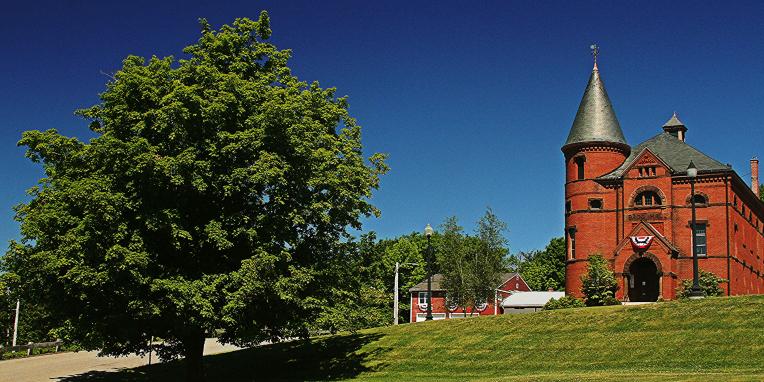FAQ - Assumptions
Questions:
- How long will this new station meet the Town’s needs?
- What staffing assumptions were made for Police in the development of the design?
- What staffing assumptions were made for Fire/EMS in the development of the design?
- How does OSHA affect this project?
How long will this new station meet the Town’s needs?
The new Public Safety building should meet Town needs for the foreseeable future. Per Massachusetts Department of Revenue's Division of Local Services, Princeton’s population grew 4% from 2000 to 2019. The building team assumed a population increase of 2% every 10 years, bringing 2059 estimated population to 3776. If that growth rate were 3% instead, the population in 2059 is still under 4000.
The team also assumed this building will probably be used for at least 50 years. Our “new” station (in East Princeton) was built in 1984. It will be 40 years old when the new building comes on line and we still plan on using it. We have designed in a little bit of expansion capacity. Should the need arise to expand the Public Safety operations beyond that, there is sufficient area to do so at the East Princeton station 2 site.
What staffing assumptions were made for Police in the development of the design?
We currently have the Chief, five full-time officers (two of whom are sergeants), nine part-time officers, and a full-time Administrative Assistant. We currently operate with three shifts a day. Of those 21 shifts a week, we typically have 15 shifts covered or partially covered with only officer (may be one of the sergeants). During week days, we typically have a Sergeant on the road and the Administrative Assistant and Chief in the office. We could have officers in the station doing training during their shift.
Though the Town is not growing quickly, there are two areas where we may decide to add staff over the next five years. The 15 shifts covered by only one officer are becoming increasingly worrisome and we may decide to have 2 people on all shifts. These extra shifts would most likely be covered by part time officers. In addition, we may consider adding a detective position to follow up on cases, investigate cases, write search warrants and subpoenas and maybe cover open shifts. Investigations are taking up a substantial amount of time due to the increase in computer related crimes including social media investigations. They could also take part in the Worcester County Drug Task Force and the breaking and entering task force. This person would typically work any shift they need to work on the investigation. PDs’ best estimate is that these two changes would result in an extra two officers (the detective position and an additional full-time officer within the next 40 years.
All officers currently have lockers to store their gear at the current police station and would all need lockers at the new facility. We have designed the locker area with the expected future staffing in mind. We added a detective’s office to the design as well.
What staffing assumptions were made for Fire/EMS in the development of the design?
The current roster of the fire and EMS department is 40 including our per diem crew (manning the station in case of a medical emergency, 7 days a week from 7 am to 5 pm). As we face difficulty filling shifts, we add more people to our roster.
The number of people on the roster affects the size of the turnout gear area. Each person has their own dedicated gear that needs space. The gear is sized to the individual and cannot be shared.
Though we don’t have any plans at this time to move to a full-time department, we have been moving toward having more time covered by medics and/or EMTs (our per diem crew). If response time for calls begins to suffer, we may need to expand our per diem program or consider adding 4-6 full-time staff over the next few years. That expansion isn’t expected to cause problems with locker room space. Local full-time departments typically don’t exceed a crew of 8 on any given shift. The locker room is designed for our projected needs.
How does OSHA affect this project?
On March 9, 2018, Governor Charlie Baker signed the Massachusetts Workers Safety Bill extending OSHA standards protections to municipal workers. Police and Fire Departments in Massachusetts are now required to comply with minimum OSHA regulations.
The following are some highlights of OSHA Requirements for Fire/EMS related to facilities. The new public safety facility will bring Princeton Fire/EMS to full compliance.
Facility Safety (existing two stations)
- Electrical wiring (Princeton Not Compliant)
- Stairways, railings, and floor maintenance to prevent slip-trips (Princeton Not Compliant)
- Ventilation for truck exhaust (Princeton Not Compliant at Station 2, recently added at Station 1)
Cancer Prevention (existing two stations)
- Respirator program for inhalation of smoke or soot
- Personal Protective Equipment (PPE) program for skin contact with smoke or soot
- Procedures to prevent migration of soot contamination in firehouse
- Decontamination facilities for gear and personnel (Princeton Not Compliant for personnel but we do have laundry equipment for gear)
- Control of engine exhaust in truck bays (Princeton Not Compliant at station 2)
Preventing Common Injury Patterns
(The following are best practice and not mandated by OSHA)
- Ergonomic training for lifting and essential job tasks to prevent back, shoulder and knee injuries (Princeton Not Compliant)
- Fitness program to prevent back, shoulder and knee injuries and reduce risk of cardiac disease (Princeton currently complies with the gym but we need a certified fitness and agility instructor)
- Wellness program to promote stress management techniques and access professional mental health providers


